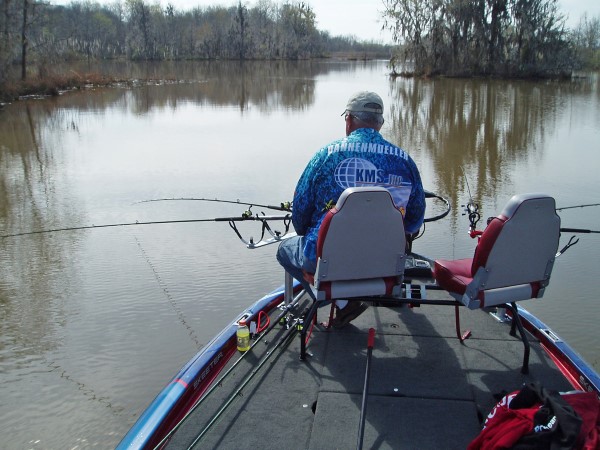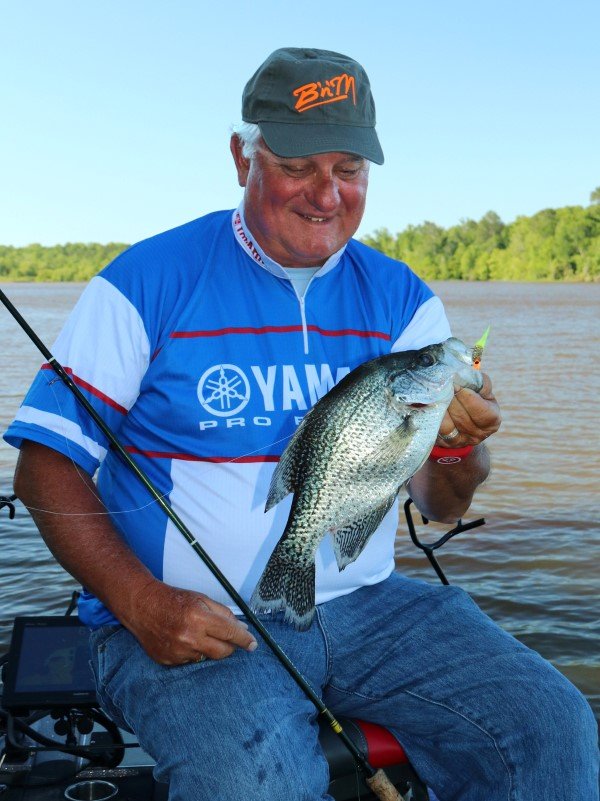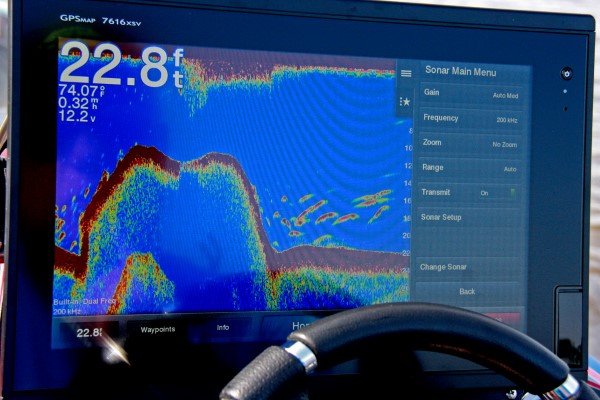By Tim Huffman

Crappie are no strangers to rivers and creek systems. Good numbers and sizes are both possible when conditions are right…and many rivers have the right conditions. Here a quick look at a few key elements.
Finding
Tournament angler, seminar speaker and publisher of CrappieNow Magazine, calls the Alabama River his home water. When traveling the country on the tournament trail, he often encounters many fishing situations where river knowledge is important for success.
“It’s not too difficult to find crappie in the spring because they are creatures of habit and they go relatively shallow to super shallow. Good presentation and searching will get a fisherman into good action.
“Electronics becomes a key component when the fish aren’t spawning,” says Dannenmueller. “Everything before the spawn and after switches to finding contours and cover. Every company has good electronics today but I prefer Garmin. They have clear, accurate readings whether it’s down, to the sides, or PanOptics.”
He seldom wastes time by fishing before closely searching with electronics believing time spent on the locator is more important than having poles in the water. By fishing high percentage spots less time will be wasted in unproductive locations.

Targeting & Catching
“Big cover right on a ledge can be fantastic on a river system,” says Dannenmueller. “Some of these fish really don’t move too far. They live their whole life in the creek or river. So following the spawn, they will transition gradually back to a summer pattern where stumps in deep water are important.
“So we are starting shallow during the spawn, back out to mid-depths during post-spawn and to deep water, maybe 25 feet deep, in the summer. Big brushpiles, trees and stumps provide the food, cover, everything they need. We target those fish in whatever depth of water they are holding.”
Normal conditions means getting baits to the fish. Spider rigging is a good technique for putting multiple offerings to the fish at once. Dannenmueller’s boat allows two fishermen to set side-by-side on the front deck. A setup of eight 14- or 16-foot BnM BGJP poles, in single stem Driftmaster rod holders and double-hook rigs provide a 16-bait presentation. Each rig can vary but is often a straight minnow on top, down to a ½-ounce sinker, down to a Road Runner Jig with Bobby Garland Swim’R or Minnow Mind’R body. He pre-ties these rigs so if he breaks off thirty times in a day it allows for a quick re-rig and back into the water.
River Tips from Dannenmueller
Some of the best fish are found on intersections where crappie follow a channel out to where it intersects with another channel.
Finding a baitfish-channel combination creates an extremely high-potential spot for catching crappie. A ledge with food is ideal.
When current in a river is minimal, expect crappie to be suspended up over the cover. When current is moderate, they’ll get down behind it.
Electronics will reduce search time. Spend as much time as needed to find the right spots.
Remember fish don’t always bite. If you find a good spot with lots of fish but they don’t bite, return later and the fish may be active. It’s possible to be catching them two at a time using double-hook rigs when they turn on.
Fish use ledges like highways so don’t neglect fishing them.
Whether river or lake fishing, try using a new color jig. A new color will often work just because the fish haven’t seen it over and over.
“When they are hungry they eat. River crappie can be aggressive. Cold fronts and water conditions can change that. As everyone knows, rivers have current from gates being opened or heavy rains. The river is an ever-changing water forcing a fisherman to adjust when necessary. It could be heavier weight or finding areas with less current or clearer water.

“I like to push the baits into the cover and leave them there. They can be jigged, but having more baits is a big advantage even though it is more work. After catching fish at the spot, slowly backing out will often draw more action.
“One more trick is to pay attention to the sun when fishing drop-offs. Pick the side of the channel with shade. One side of a channel may be good in the morning and the other side in the afternoon.”

